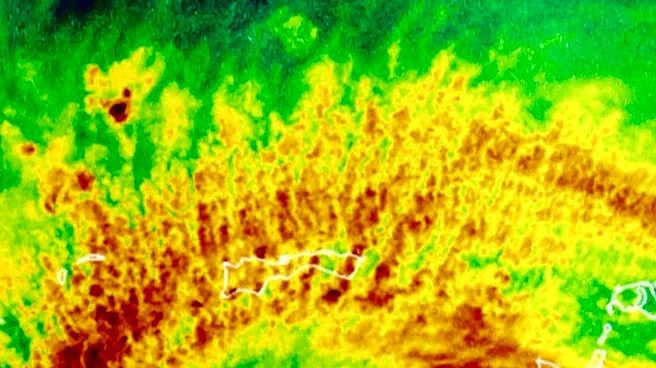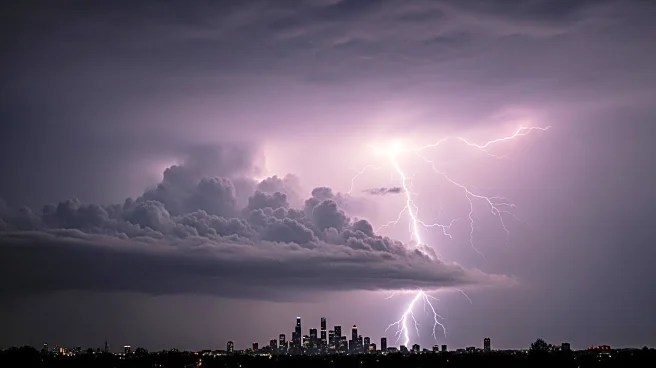What's Happening?
Super Typhoon Ragasa, the strongest storm of the year, has hit the northern Philippines with Category 5 hurricane-force winds, prompting mass evacuations and school closures. The storm made landfall over Panuitan Island in the Cagayan province, generating sustained winds of over 267 kph. Tens of millions of people could be affected as the storm moves westward, passing south of Taiwan and heading towards Hong Kong and Guangdong Province in southern China. Hong Kong and Macao are preparing for potential flooding, landslides, and fallen trees, with schools closed and flights canceled.
Why It's Important?
The impact of Super Typhoon Ragasa is significant due to its potential to cause widespread destruction across densely populated areas. The storm's path through the Philippines, Taiwan, and southern China threatens infrastructure, disrupts daily life, and poses risks to human safety. The financial hub of Hong Kong is particularly vulnerable, with preparations underway to mitigate damage. The typhoon highlights the increasing intensity and unpredictability of storms in the region, exacerbated by climate change, which poses ongoing challenges to disaster preparedness and response.
What's Next?
As Ragasa continues its trajectory, authorities in affected regions are implementing emergency measures, including evacuations and transport suspensions. The storm is expected to move south of Hong Kong early Wednesday, with maximum winds forecast to be just over 200 kph. The financial hub is on high alert, with emergency services on standby and temporary shelters set up. The situation remains fluid, with potential for further disruptions and damage as the storm progresses.
Beyond the Headlines
The increasing frequency and intensity of typhoons in the Pacific region underscore the broader implications of climate change. Super Typhoon Ragasa's rapid intensification is a reminder of the challenges posed by global warming, which fuels stronger storms. This event highlights the need for enhanced climate resilience and adaptation strategies, particularly for vulnerable communities in typhoon-prone areas.












